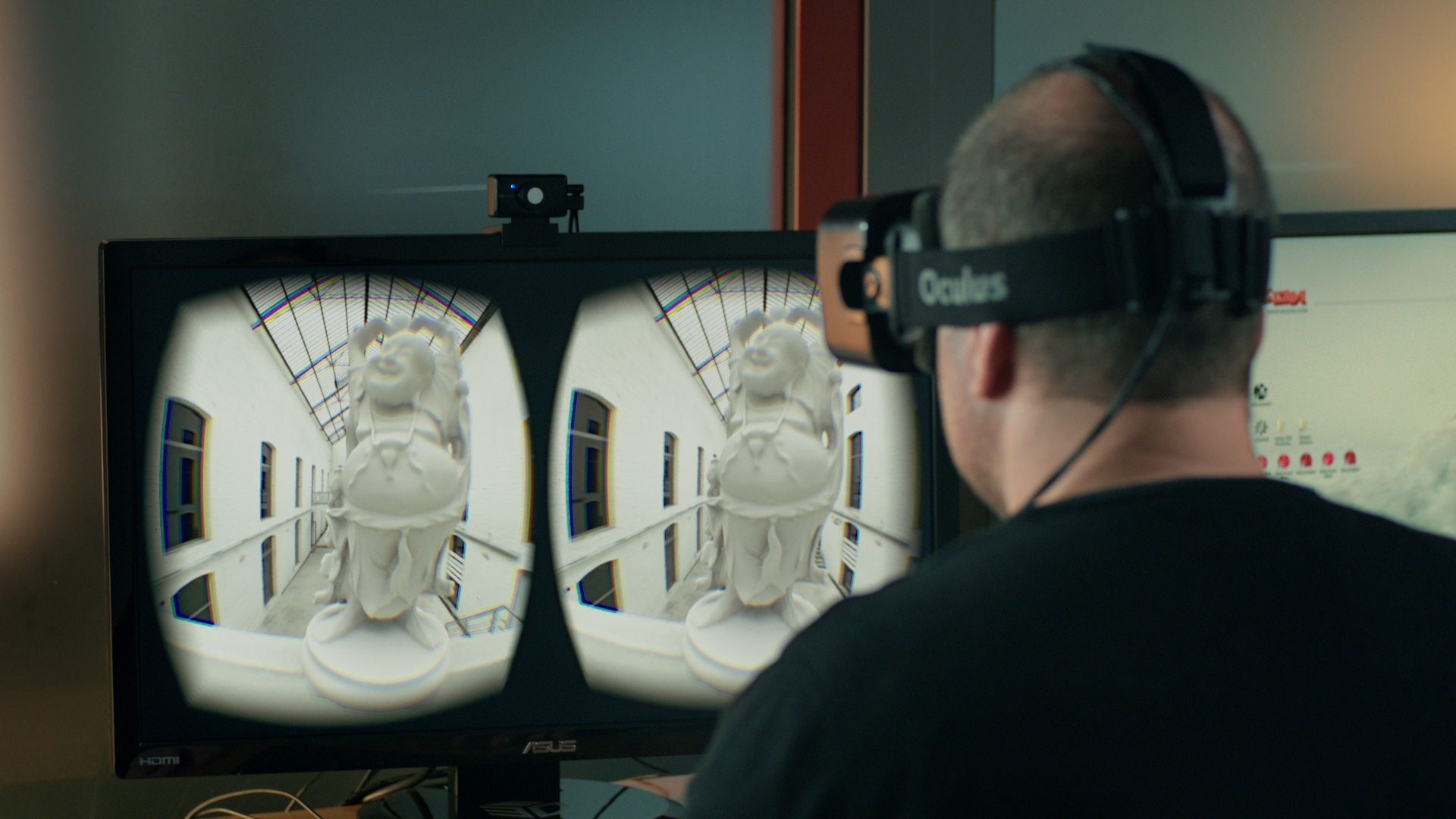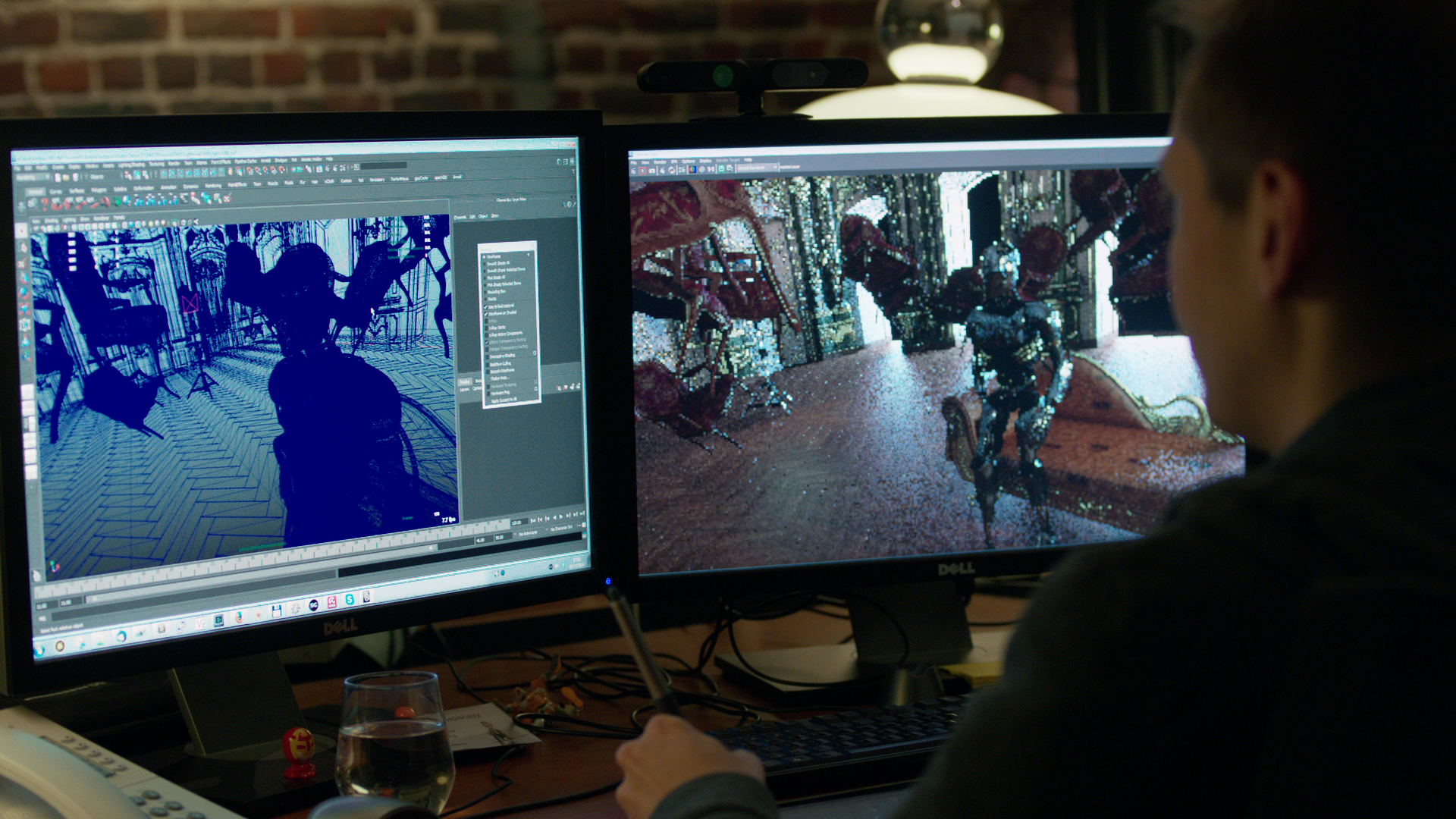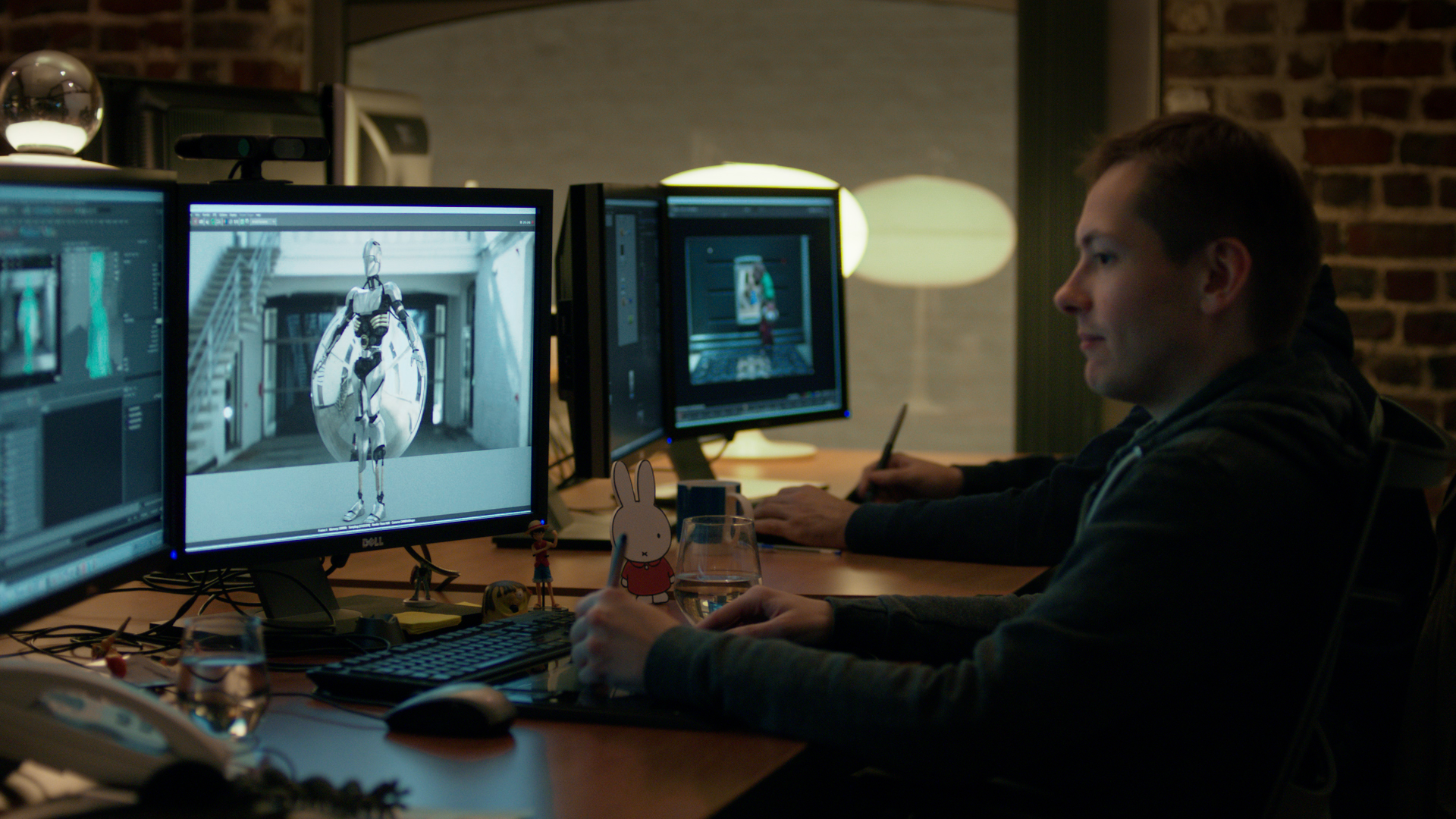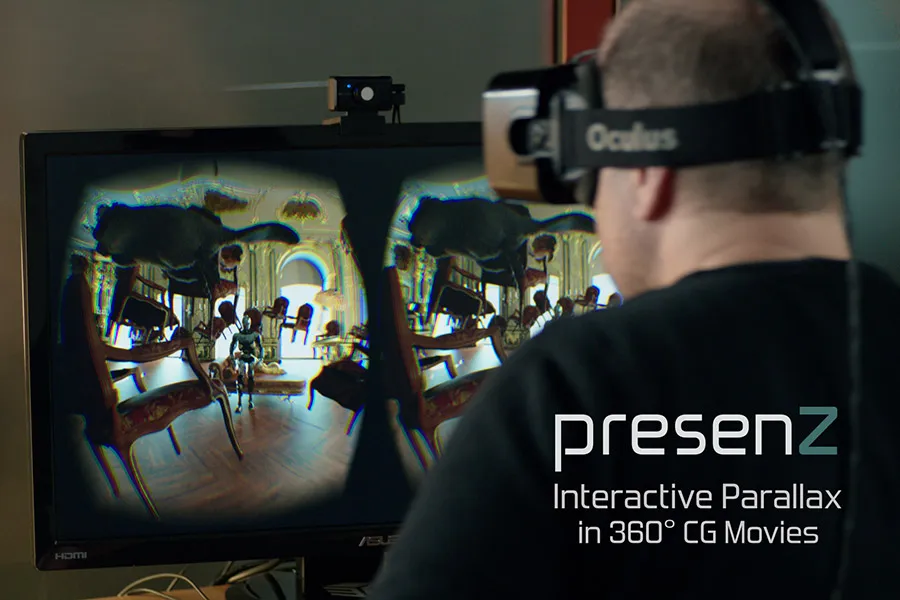At the UPLOAD World Tour Kickoff this past Friday, patrons were treated to the special, unannounced demo debut of Nozon’s revolutionary PresenZ technology, which brings interactive parallax to pre-rendered 360-degree videos. The company, based in Brussels, has been working in post production effects since 1998 so they have had plenty of collective experience in the computer graphics space. They have utilized that knowhow to produce PresenZ which may revolutionize the VR cinematic experience by existing in the territory between Hollywood production and game engine.
One of the current problems with even the best 3D cinematic experiences is that unless they are fully animated films, like VR Butts for example, positional head tracking simply does not exist. This is one of the reasons why many of even the most impressive VR Cinematic experience demos seem to fall short in ways where games succeed. No matter your opinion on CG’s use in modern filmmaking, one would be remissed to dismiss CG as anything other than transformative for the entire film industry. If you have been to a movie during the summer at all during the last decade you have seen the spectacle that has been enabled by green screens and 3D, and honestly might be surprised with how much of today’s filmmaking is done in the post production studio. By enabling a parallax 3D effect on these objects, Presenz allows the viewer to peer around the objects and lean in, just as you would in a VR game, the difference being that these are added to a 360-degree video environment that is pre rendered. The effect of this is so seamless that it may not seem as impactful on first viewing. It took me a second to realize I wasn’t simply looking at another environment demo with some cool effects, but rather something completely new and potentially transformative.
http://vimeo.com/116051376
The demo I was shown at UPLOAD was in two parts. In the first part, you are placed in a nicely adorned room, there is gold leaf outline on the walls and royal-looking chairs are scattered throughout the room. The best way I could describe the environment was that it looked like a room in Buckingham Palace. Seated on a fainting couch in front of you is a robot, chillin’ like a villain, as a beaver (I was told the reason for the robot and beaver was they were assets they were able to reuse, thus showing off the ability of the platform to repurpose already created CG assets) jumps up and sits next to him. Shortly thereafter, the gravity in the room is shut off, and the chairs start floating off throughout the room. The beaver jumps from the couch to one of the floating chairs, getting quite close to the camera as it does, the level of detail in the CG is pretty apparent at this point in the demo and it is fantastic. In terms of pure rendered detail, this was likely the best demo I have seen outside of the Unreal Showdown demo on the Crescent Bay. As the chairs and beaver float around the room the robot stands up and walks close to the camera, the highlight here is that they manage to portray multiple layers of depth, which all work perfectly well with the positional tracking parallax effect. I was able to lean around the objects in the space similar to how I would in a well-done VR game (although as I said before, with greater detail).

The second part of the demo places you in a scanned version of their offices in Brussels. At first it appears to be a pretty standard 360 rendering, but on the instruction of the demoer I was told to try leaning around the statue in the center of the screen. As I did, I realized I could lean around the statue and peer over the railing, which was pretty cool. Then the demoer said to look over to my right, when I did I saw a model that had appeared rendered next to me, I was then further instructed to peer around him and to my astonishment was able to see another figure behind him. This subtle (or not too subtle depending on your perspective) difference in 3D films could make the difference in providing people with the same sense of presence they get from high quality VR games like AD1FT and Elite: Dangerous, in a cinematic experience.

So what separates PresenZ then from more traditional real time game engines, like Unity or Unreal? It’s all about the computing power needed to create VR experiences. For complex experiences to be run in real time through a game engine, you need an incredibly powerful system, because the scene is being rendered (twice over) at a minimum of 75fps. This means that in order for an experience to run smoothly in real time, you need to either have massive amounts of computing power (which limits it to only the highest end PC gaming consumers) and even the most powerful home system is not equipped to run movie-quality CG in real time. However, using pre-rendered scenes and images, combined with PresenZ, you can create stunningly detailed, blockbuster quality, actively-passive experiences. Imagine bringing the wow factor of seeing the equivalent of the incredibly rendered cutscenes in Final Fantasy X (which were done on a PS2) in a modern VR experience, it would be pretty amazing. Does it still require a powerful computer? Yes, but because it is pre-rendered you can enable processor-intensive effects like global illumination, which make a world of difference in terms of realism; but would melt a computer playing a real time game at that graphical fidelity. The beaver scene for example, contained over 200 million polygons.
 PresenZ also really helps bridge the necessary technology gap between high-end, early adopters of the tech and your average Joe consumer who doesn’t have a beast with stacked 980s in his bedroom. The thing is, everyone who hears about VR wants to experience that cinematically real scenario, to tap into that same rush they get from a summer blockbuster film, but at an entirely new level. That is the promise of cinematic VR, and until PresenZ that wasn’t quite a reality. Really looking forward to seeing what happens when some of the key players in the filmmaking industry get involved with this tech, it could be very exciting.
PresenZ also really helps bridge the necessary technology gap between high-end, early adopters of the tech and your average Joe consumer who doesn’t have a beast with stacked 980s in his bedroom. The thing is, everyone who hears about VR wants to experience that cinematically real scenario, to tap into that same rush they get from a summer blockbuster film, but at an entirely new level. That is the promise of cinematic VR, and until PresenZ that wasn’t quite a reality. Really looking forward to seeing what happens when some of the key players in the filmmaking industry get involved with this tech, it could be very exciting.
What would be your ultimate film experience with PresenZ?

























